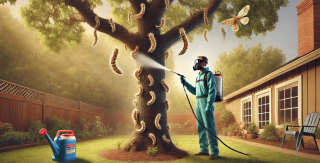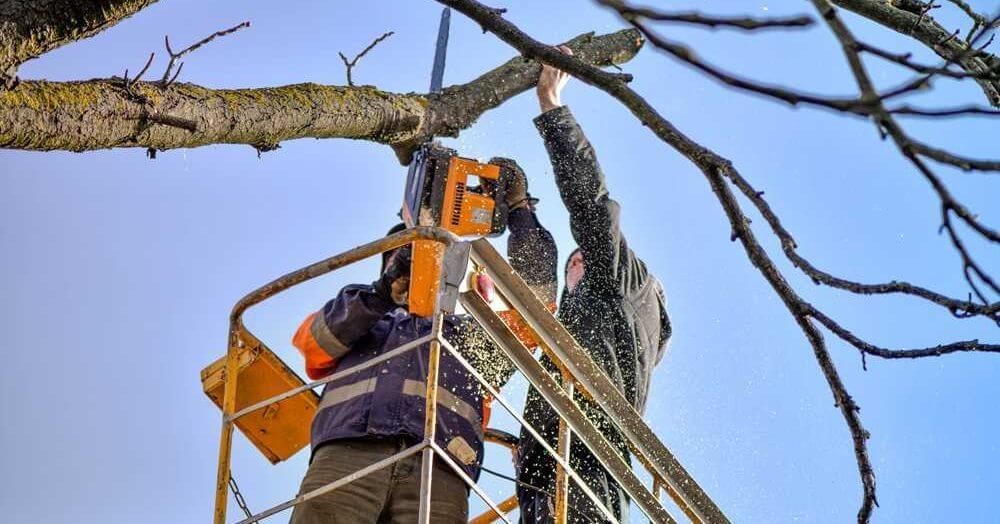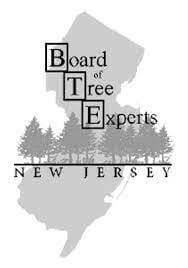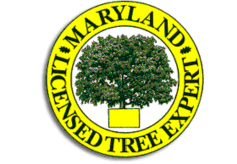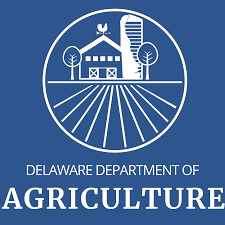The buck moth caterpillar is more than just a nuisance. It’s one of the most venomous caterpillars in the southern U.S. It feeds on trees, especially oaks, and can cause painful stings. At Strobert Tree Services, we help homeowners and property managers protect their trees and stay safe. Here’s what you need to know.
What Is a Buck Moth Caterpillar?
The buck moth caterpillar (Hemileuca maia) is the larval form of the buck moth. It belongs to the Lepidoptera order and the Saturniidae family. These caterpillars are large, dark-colored, and spiny. They often travel in groups and move in single file.
You can recognize them by the crescent-shaped white marks along their bodies. Their spines can inject venom, causing pain, swelling, and sometimes serious allergic reactions.
Description and Characteristics
The buck moth caterpillar, known scientifically as Hemileuca maia, is easy to spot once you know what to look for. These large, dark caterpillars are covered in sharp spines that can cause painful stings and lead to contact dermatitis lesions—itchy, red skin reactions.
One of their key features is a crescent-shaped white mark along the sides of their bodies, which helps with identification. When they first hatch, young buck moth caterpillars stick together in groups, a behavior called caterpillar communities. As they grow, they often move in a long, single file line. When they become moths, they have dark gray wings with an irregular median white band. These unique traits make them stand out, but also serve as a warning—stay back, and don’t touch.
Control and Management
Controlling and managing the buck moth caterpillar, Hemileuca maia, is important for both your safety and your trees. These caterpillars, part of the Lepidoptera order and Saturniidae family, are common in the southern U.S. and can cause painful stings—known as caterpillar envenoming—as well as serious damage to vegetation.
One effective method of pest control is using Bt (Bacillus thuringiensis), a natural bacteria that targets caterpillars without harming people or pets. This form of biological control works best when caterpillars are young.
Other options include biorationals and horticultural oil, which help manage eggs and larvae safely. In some cases, chemical control may be necessary, but it should be used with care. Many homeowners benefit from integrated pest management, which combines multiple strategies to reduce pests with less impact on the environment.
Host Plants
Buck moth caterpillars love to feed on oak trees. If you have trees like blackjack oak, live oaks, water oaks, or dwarf chestnut oak in your yard, they could be at risk. These caterpillars are common in oak woods and oak-pine sand barrens, where they thrive on the leaves of deciduous plant species. They don’t just stick to oaks either. Scrub oak, wild cherry trees, willow trees, and even rose bushes can attract them. If you notice damage to these plants in the spring, there’s a good chance buck moth caterpillars are the cause.
Life Cycle and Symptoms
The life cycle of the buck moth caterpillar begins in late fall, when adult moths emerge and lay eggs on tree bark, often after leaves have dropped. These eggs stay through winter and hatch by mid-spring. The tiny larvae, or young caterpillars, feed on fresh leaves and grow quickly through several stages. As they move through these growth stages, they become larger and more noticeable. By early summer, the caterpillars leave the trees and enter the pupa stage in the soil. They stay there until the cycle starts again. Signs of their presence include chewed leaves, clusters of caterpillars on branches, and caterpillars crawling down tree trunks. Catching these symptoms early makes them easier to manage.
Seasonality
The buck moth caterpillar is most active in early spring, especially during April and May. That’s when young caterpillars hatch and begin to feed in groups, often stripping leaves from oak trees. As the weather warms, they grow quickly and start migrating down from trees to pupate in the soil. This process continues through late spring, and by summer, they’re hidden underground. They stay there all season and overwinter in their pupal stage. In the fall—usually around the start of deer hunting season—adult moths emerge to lay eggs. There’s only a single generation each year, so catching them early in the season makes all the difference.
Prevention Tips
- Inspect oak trees regularly in spring
- Remove egg masses in fall
- Avoid walking barefoot near infested trees
- Wear gloves when gardening under oaks
- Educate children about the risks of touching caterpillars
Dangers to Humans
The spines of the buck moth caterpillar contain venom glands. Contact can cause dermal irritation, pain, and even allergic reactions. Some people experience swelling, rash, and in rare cases, anaphylactic reactions.
If stung:
- Wash the area with soap and water
- Apply ice to reduce swelling
- Take antihistamines for itching
- Seek medical attention if symptoms worsen
Sting Reactions and Care
Getting stung by a buck moth caterpillar can be a painful surprise. The caterpillar’s spines contain venom glands that release toxins when touched. This can cause sharp pain, red skin, and swelling in the area. Some people may experience dermal irritation that lasts for hours or even days. If you have allergies, be extra cautious—an allergic reaction can lead to more serious issues. In rare cases, stings can trigger anaphylactic reactions, which require immediate medical attention. For most people, washing the area with soap and water, applying ice, and taking an antihistamine can help reduce the discomfort. If the area becomes more swollen or painful, don’t wait—seek medical care to stay safe.
Final Thoughts
The buck moth caterpillar is a serious pest in the southern U.S. Its stings are painful, and it can harm trees if left unchecked. Early action is the best defense.
Need help? Contact Strobert Tree Services today. We offer expert pruning, tree removal, and health assessments by certified arborists. Let us help keep your trees—and your yard—safe and healthy.
Call now for a free tree health assessment.
Your trees deserve the best care.
We’re here to help. Call 1-800 TREE SERVICE.


